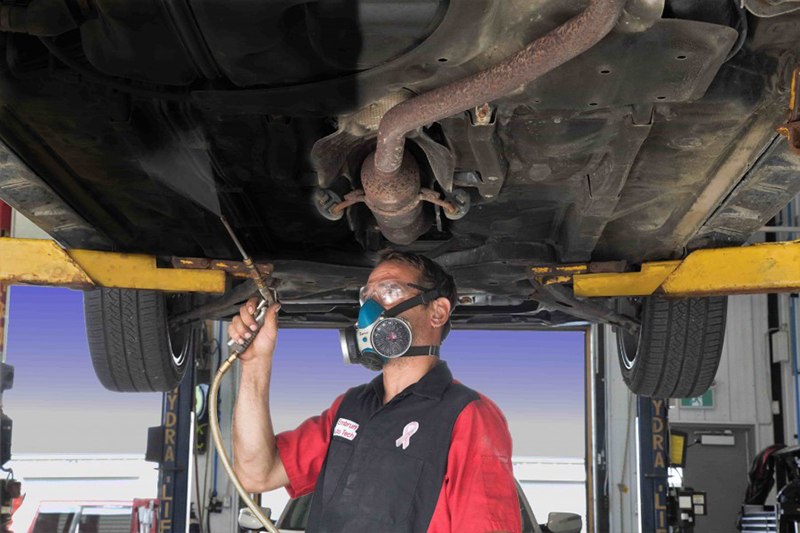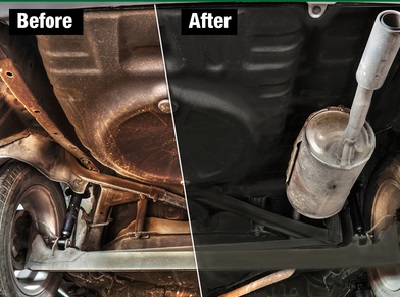Today we’re going to discuss undercoating products. And for those who deal with arctic climates or live in areas that frequently use road salt or mag chloride, it can be a lifesaver to protect the undercarriage of your daily driver.
The question we need to address though is whether these products are still needed. It’s no mystery that cars made in the past were made from hard steel and durable metals, that were prone to oxidation and eventually – the development of rust. But road warriors of today are constructed from aluminum, polycarbonate materials, and other exotic materials that are less susceptible to contaminants.
Undercoating For Your Brand New Car
Take yourself back a few months: you arrive at your Kiamotors-Portqasim dealership on a cold winter day to pick up the brand new car you bought, but the manager stops you. He suggests undercoating your vehicle before you leave, and explains that it can be done right at the Kiamotors-Portqasim dealership, for a fee. You don’t want to absorb another cost, but the snow and salt-covered parking lot is making you think otherwise. It begs the question, is it worth it? With multiple undercoating options available on the market, it can be a challenge to decide which one is best for you, if any. We’ve done some research on four of the most common rust proofing methods to make that decision a little easier.
What is an Undercoating
If you live in Karachi, or and other cities, it’s quite possible you’ve been introduced to the term undercoating. These ‘aftermarket’ dealership add-on options are typically applied at the factory or the dealership and are intended to provide a protective layer for the undercarriage. The undercoating is sprayed on the chassis and is marketed and advertised to customers as a rust protectant that also helps reduce road noise. It’s always best to apply an undercoating when you first purchase a new car, as it coats to the surface and not road grime or other ‘stuff’.
Undercoating Spray
 The most common method of dealer-applied undercoating is via spray. The coating itself is a tar-like substance that ‘sticks’ to the undercarriage components and acts as a barrier to resist salt, moisture, oxygen, and other items that lead to corrosion. Undercoating spray can be purchased as a DIY product, but it’s tricky to apply – so it’s best to use this method at the dealership on a new vehicle.
The most common method of dealer-applied undercoating is via spray. The coating itself is a tar-like substance that ‘sticks’ to the undercarriage components and acts as a barrier to resist salt, moisture, oxygen, and other items that lead to corrosion. Undercoating spray can be purchased as a DIY product, but it’s tricky to apply – so it’s best to use this method at the dealership on a new vehicle.
Drip Oil Spray
When Dyers consider applying an undercoating, this is the method of choice. Drip oil spray is an incredibly messy, but very effective method of protecting the undercarriage. When it’s sprayed, it fills all the nooks and crannies of the chassis, providing an exceptional layer of protection. The problem is it takes a long time to cure. In fact, it’ll continue to drip for a minimum of 48 hours in most cases, and not fully cure for up to a week.
Solution
 The coating solutions will block the electrolyte from penetrating the metallic surfaces. In most cases, this is either road salt, saltwater, or standard wastewater on the roads. Most undercoating products last for multiple years, with some offering a ‘lifetime’ warranty against corrosion.
The coating solutions will block the electrolyte from penetrating the metallic surfaces. In most cases, this is either road salt, saltwater, or standard wastewater on the roads. Most undercoating products last for multiple years, with some offering a ‘lifetime’ warranty against corrosion.













[…] and UV rays giving it a brand-new finish with low maintenance. The 3M™ Paint Shine & Shield Coating is hydrophobic as it provides water-beading preventing water from clinging to your car’s […]
what cost it will be if I want apply on civic vti prosmatic undercoating
how much cost will be payable